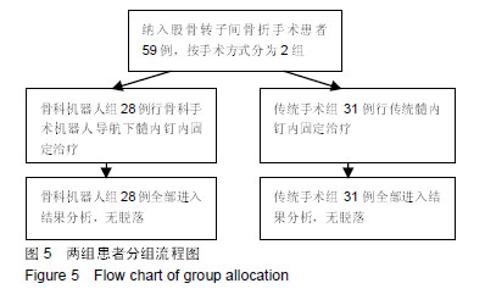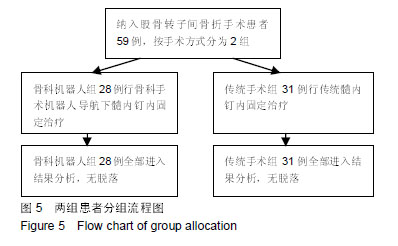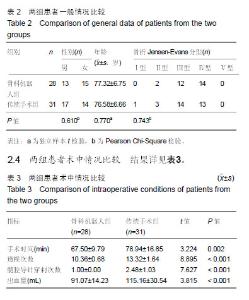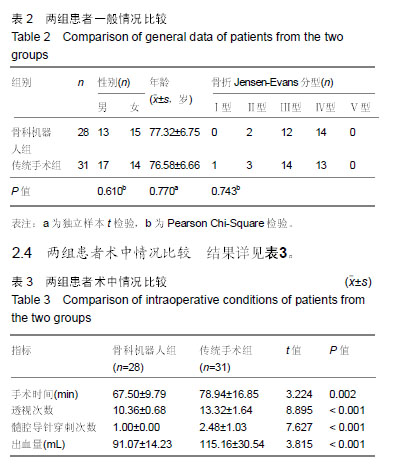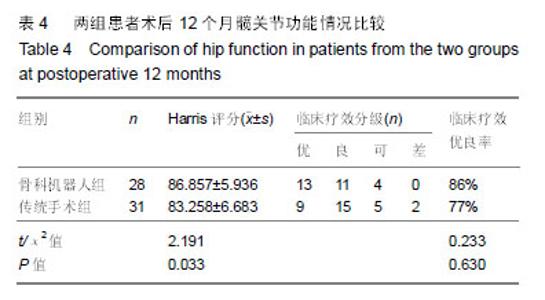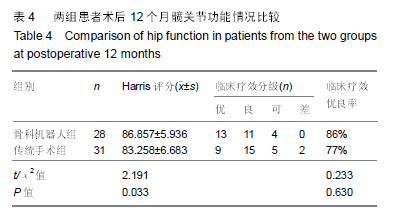| [1]Kwoh YS, Hou J, Jonckheere EA, et al. A robot with improved absolute positioning accuracy for CT guided stereotactic brain surgery.IEEE Trans Biomed Eng. 1988;35(2): 153-160.[2]郭硕,郭征. 骨科手术机器人研究进展[J]. 武警医学,2018,29(10): 987-990.[3]Digioia AM. What is computer assisted orthopaedic surgerry? Clin Orthop. 1998;(354): 2-4. [4]王飞跃,张梅,孟祥冰,等. 平行手术:基于ACP的智能手术计算方法[J].模式识别与人工智能, 2017, 30(11): 961-970.[5]Plaskos C, Cinquin P, Lavallée S, et al. Praxiteles: a miniature bone-mounted robot for minimal access total knee arthroplasty. Int J Med Robot. 2005;1(4):67-79.[6]Ringel F , Stüer C, Reinke A , et al. Accuracy of robot-assisted placement of lumbar and sacral pedicle screws: a prospective randomized comparison to conventional freehand screw implantation. Spine. 2012;37(8):E496-E501.[7]Dreval ON, Rynkov IP, Kasparova KA, et al. Results of using spine assist mazor in surgical treatment of spine disorders. Zh Vopr Neirokhir Im N N Burdenko.2014;78(3):14-20.[8]Schatlo B, Molliqaj G, Cuvinciuc V, et al. Safety and accuracy of robot-assisted versus fluoroscopy-guided pedicle screw insertion for degenerative diseases of the lumbar spine: a matched cohort comparison. J Neurosurg Spine. 2014;20(6):636-643.[9]韩建达,宋国立,赵忆文,等.脊柱微创手术机器人研究现状[J]. 机器人技术与应用,2011,24(4): 24-27.[10]赵燕鹏,唐佩福. 骨科机器人及导航技术研究进展[J]. 中国矫形外科杂志, 2016, 24(3):242-246.[11]Grossman DC, Curry SJ, Owens DK, et al. Vitamin D, Calcium, or combined supplementation for the primary prevention of fractures in community-dwelling adults: us preventive services task force recommendation statement. JAMA. 2018; 319(15):1592-1599.[12]US Preventive Services Task Force, Curry Susan J, Krist Alex H, et al. Screening for osteoporosis to prevent fractures: us preventive services task force recommendation statement. JAMA. 2018; 319(24):2521-2531.[13]谢逸波,曾波,李培浩,等. 股骨近端防旋髓内钉和解剖锁定钢板治疗老年股骨转子间骨折的效果比较[J]. 中国矫形外科杂志, 2017, 25(10): 950-953.[14]刘松,李佳,李石伦,等. 中国华北和华东地区2010至2011年老年股骨转子间骨折流行病学对比分析[J]. 中华老年骨科与康复电子杂志, 2018,4(1):43-47.[15]李现军. 股骨近端髓内钉与人工髋关节置换修复股骨转子间骨折的对比[J]. 中国组织工程研究, 2015, 19(13):1979-1983.[16]王人楷,章浩,李迪,等. 股骨粗隆间骨折临床分型研究进展[J]. 中国矫形外科杂志,2018,26(20):1882-1887.[17]王连净,曾宪铁. 防旋股骨近端髓内钉Ⅱ和亚洲股骨髓内钉内固定修复老年股骨转子下骨折的生物力学分析[J]. 中国组织工程研究,2016, 20(31):4644-4650.[18]李树东,王树海,纪福利. 比较髓内固定与髓外固定治疗股骨粗隆下骨折的临床疗效[J]. 临床医药文献电子杂志,2017,4(2):277.[19]黄凤琪,肖小注,邓建龙,等. 两种体位下PFNA治疗老年股骨粗隆间骨折的临床比较[J]. 实用骨科杂志, 2015,21(5):448-450.[20]葛邦新,段军富,王博,等.骨科机器人导航定位系统在股骨颈骨折空心螺钉内固定术中的应用价值[J].新乡医学院学报,2016,33(12): 1085-1087,1090.[21]秦永超,史立强,刘双会,等.PFNA治疗老年股骨粗隆间骨折隐性失血特点及影响因素分析[J].中医临床研究,2017,9(21):117-120.[22]Jacofsky DJ, Allen M. Robotics in arthroplasty: a comprehensive review. J Arthroplasty. 2016;31(10): 2353-2363.[23]蔡尚欢,宋永伟,曹向阳,等.骨科机器人应用现状与研究进展[J] .山东医药,2018, 58(44): 90-93.[24]Laratta JL, Shillingford JN, Lombardi JM, et al. Accuracy of s2 alar-iliac screw placement under robotic guidance. Spine Deform. 2018;6(2):130-136.[25]张鹤,王洪伟,韩建达,等. CT与C型臂辅助遥控型脊柱微创手术机器人系统打孔可靠性研究[J].第三军医大学学报,2012,34(13):1314-1317.[26]王恩运,吴学,谦薛莉,等.外科手术机器人的国内外发展概况及应用[J].中国医疗设备,2018,33(8):115-119.[27]易世雄,黄伟, 梁熙. 计算机辅助导航系统在关节外科的应用[J].医学信息, 2014,27(3):3-4.[28]史刚,张肖在,祁富贵,等.长骨骨干骨折复位机器人研究现状与展望[J].医疗卫生装备,2019,40(1):93-99.[29]邱贵兴. 计算机辅助导航技术在骨科手术中的应用[J].继续医学教育, 2007,21(12):11-13.[30]王军强,孙磊,王满宜.计算机辅助骨科手术的应用和进展[J].中华创伤骨科杂志, 2004,6(1):110-114.[31]王军强. 骨科手术机器人临床应用的优势和局限[J]. 中国医刊, 2016, 51(10):1-2.[32]刘华水,段升军,贾逢爽,等. TiRobot机器人辅助经皮空心螺钉内固定治疗不稳定型骨盆骨折[J].山东大学学报(医学版),2017,55(7):109-115.[33]刘建全,刘黎军,黄俊锋,等. 机器人导航定位系统辅助下经皮空心螺钉内固定治疗股骨颈骨折[J].中华创伤骨科杂志,2015,17(8): 692-698.[34]赵春鹏,王军强,王豫,等.双平面骨科机器人系统辅助股骨颈骨折空心螺钉内固定术的实验研究[J]. 中华创伤骨科杂志,2006,1(8): 50-55.[35]田伟.我国医用机器人的研究现状及展望[J]. 骨科临床与研究杂志, 2018, 3(4):193-194.[36]王军强,吴新宝,张腾. 基于骨科手术机器人定位系统的精准微创内固定治疗股骨颈骨折[J]. 骨科临床与研究杂志, 2019,4(1):57-60.[37]Tian W. Robot-assisted posterior C1–2 transarticular screw fixation for atlantoaxial instability: a case report. Spine. 2016;41(Suppl 19): B2-B5.[38]Parker MJ,Bowers TR,Pryor GA. Sliding hip screw versus the Targon PF nail in the treatment of trochanteric fractures of the hip:a randomised trial of 600 fractures. J Bone Joint Surg Br. 2012; 94(3):391-397.[39]Xu YZ,Geng DC,Mao HQ,et al.A comparison of the proximal femoral nail antirotation device and dynamic hip screw in the treatment of unstable pertrochanteric fracture. J Int Med Res. 2010;38(4):1266-1275.[40]Little NJ,Verma V,Fernando C,et al. A prospective trial comparing the Holland nail with the dynamic hip screw in the treatment of intertrochanteric fractures of the hip. J Bone Joint Surg Br. 2008; 90(8):1073-1078.[41]Dagnino G , Georgilas I , Morad S , et al. Image-guided surgical robotic system for percutaneous reduction of joint fractures. Ann Biomed Eng. 2017;45(11):2648–2662. |
